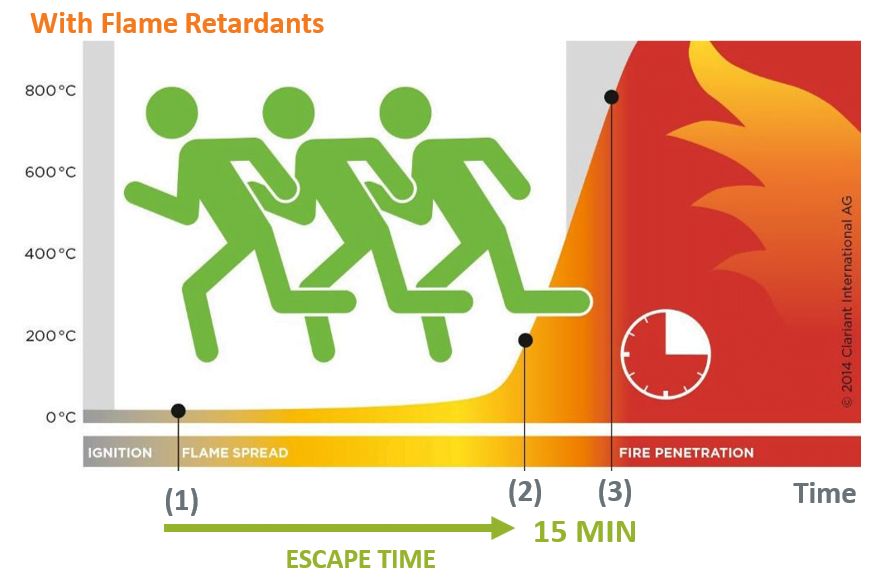
How do flame retardants improve furniture fire safety, depending on effects: prevent ignition, reduce heat, smoke? Two recent issues of the PolyFlame newsletter (French Chemical Society) present three different positions on whether, or in which conditions, flame retardants in furniture may contribute to save lives. A paper by J. Fleming (consultant and previously fire-fighter and Boston City Fire Marshall), in PolyFlame n°25, suggests that FRs effect of delaying high heat release (the pinfa infographics are shown) may have little benefit, because escape is most often hindered by smoke (visibility, toxicity), and gas-phase FRs can increase initial smoke emission. This same n°25 includes an article by Marcello Hirschler, fire safety expert (from PolyFlame n°9, 2016) who argues that smoke toxicity of materials containing FRs is not significantly different from non-FR materials, and that time to peak heat release is key to fire lethality (see also Hirschler, Fire Protection Engineering, in pinfa Newsletter n°63). A third article in PolyFlame n°26, by K Rodgers, Boston University, argues that the decrease in furniture fire deaths in the USA since 1980 (fewer such fires), whilst at the same time furniture fires have become deadlier, and data on fires started by open flames and smoking materials, suggest that the national standard requiring resistance to ignition by a smouldering cigarette is appropriate to improve fire safety (see also summary of Rodgers et al. 2019 in pinfa Newsletter n°104).
PolyFlame Newsletter http://gcf-scf.lmops.univ-lorraine.fr/ (see in top menu on this page). Relevant articles are in English.